Industry Trends in Cellulose Ethers for Powder Coatings and Daily Chemicals
The global market for cellulose ethers, particularly Hydroxypropyl Methylcellulose (HPMC), is experiencing robust growth driven by increasing demand across diverse industries. In the realm of powder coatings, HPMC plays a critical role as a rheology modifier, thickener, and film-forming agent, enhancing adhesion, flow, and overall film performance. The drive towards more sustainable and VOC-compliant coating solutions further propels the adoption of advanced additives like HPMC. Simultaneously, the daily chemical sector heavily relies on HPMC for its thickening, stabilizing, emulsifying, and water retention properties in products ranging from detergents and personal care items to household cleaners.
Emerging trends indicate a heightened focus on specialized HPMC grades tailored for specific application demands. This includes HPMC with enhanced cold-water solubility for rapid dissolution, improved enzymatic resistance for extended shelf life in formulations, and optimized pseudoplasticity for better sprayability in coatings or smoother application in creams. Manufacturers are also seeking finer particle sizes for faster dissolution rates and superior performance. The demand for high-viscosity grades like the 20000 mPa.s variant is particularly strong, as it offers superior thickening efficiency and film strength, critical for high-performance applications. The increasing complexity of formulations in both sectors necessitates a deeper understanding of polymer interactions and the precise selection of cellulose ethers to achieve desired end-product characteristics.
Understanding Powder coating raw material HPMC 20000 Daily Chemicals: Manufacturing Process and Technical Specifications
The production of high-quality Powder coating raw material HPMC 20000 Daily Chemicals involves a sophisticated multi-stage chemical synthesis and purification process, ensuring consistent performance and purity critical for demanding industrial applications. The 20000 designation refers to its nominal viscosity, a key parameter defining its thickening power.
Manufacturing Process Flow:
The core manufacturing process for HPMC follows a series of precise chemical reactions and physical treatments:
- Raw Material Preparation: High-purity cellulose, typically sourced from wood pulp or cotton linter, is selected. This natural polymer forms the backbone of HPMC. Quality control at this stage includes testing for cellulose purity, degree of polymerization, and moisture content, adhering to standards like ASTM D1921.
- Alkalization (Mercerization): The purified cellulose is reacted with a concentrated sodium hydroxide (NaOH) solution. This process breaks hydrogen bonds, swells the cellulose structure, and converts it into alkali cellulose, making the hydroxyl groups more accessible for etherification. This is a critical step for controlling the reactivity and subsequent substitution patterns.
- Etherification: The alkali cellulose is then transferred to a reaction vessel, typically a jacketed reactor, where methyl chloride and propylene oxide are introduced. These etherifying agents react with the accessible hydroxyl groups on the cellulose backbone, forming methoxy and hydroxypropyl substitutions. The ratio and reaction conditions precisely control the degree of substitution (DS) for methyl and molar substitution (MS) for hydroxypropyl groups, which directly influence properties like viscosity, gelling temperature, and solubility. Temperature and pressure are rigorously monitored and controlled.
- Neutralization and Washing: After the etherification reaction, excess alkali and byproducts (like sodium chloride and propylene glycol) are removed. The product is neutralized, often with acetic acid, and then subjected to multiple washing cycles with hot demineralized water to remove all water-soluble impurities. This purification step is crucial for achieving the high purity required for daily chemical and sensitive powder coating applications.
- Drying and Grinding: The purified HPMC is then dried to a low moisture content using advanced dryers (e.g., flash dryers or fluidized bed dryers) to prevent agglomeration and ensure stability. The dried material is subsequently ground to a fine, consistent particle size distribution, which affects dissolution rate and dispersibility. Particle size analysis is performed according to ISO 13320 standards.
- Sieving and Packaging: The final product is sieved to ensure the desired particle size uniformity and then packaged into multi-ply paper bags or bulk container111s under controlled atmospheric conditions to prevent moisture absorption. Each batch undergoes final quality checks, including viscosity, moisture, pH, and substitution degree, often certified to ISO 9001 and REACH compliance.
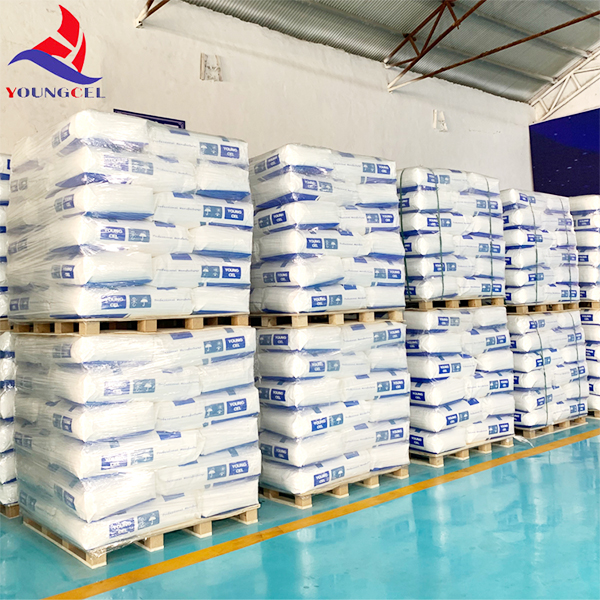
Technical Specifications: HPMC 20000 Daily Chemicals
This specific grade of HPMC, with a nominal viscosity of 20000 mPa.s, is engineered for superior thickening and rheology modification. Its specifications are critical for formulation stability and performance:
Application Scenarios and Technical Advantages
The versatility and robust performance of Powder coating raw material HPMC 20000 Daily Chemicals make it indispensable across a spectrum of industrial applications. Its high viscosity and controlled substitution patterns provide significant technical advantages.
Target Industries:
- Coatings & Adhesives: Industrial powder coatings, water-based paints, specialized adhesives, architectural coatings.
- Daily Chemicals: Shampoos, conditioners, liquid soaps, hand sanitizers, detergents, body lotions, cosmetics.
- Construction: Cement-based mortars, tile adhesives, self-leveling compounds, gypsum products (though 20000 is often for specific high-viscosity needs).
- Textile: Thickening agents for textile printing pastes.
- Oil & Gas: Fluid loss control agent in drilling fluids.
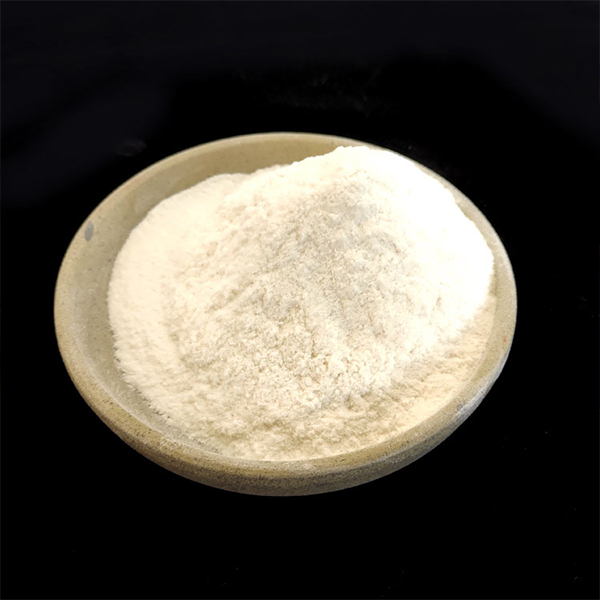
Technical Advantages in Typical Application Scenarios:
- Enhanced Rheology Control: In powder coatings, Powder coating raw material HPMC 20000 Daily Chemicals provides excellent pseudoplasticity, ensuring optimal flow and leveling during application, reducing sags and drips, and improving film build-up. Its high viscosity is particularly beneficial for vertical applications. In daily chemicals, it creates desired texture and stability, preventing phase separation and improving consumer experience.
- Superior Water Retention: Essential in water-based coatings and personal care products. This HPMC minimizes water loss, extending open time for better application in coatings and ensuring hydration in cosmetic formulations, preventing product drying and cracking.
- Improved Adhesion and Film Strength: As a binder and film-former, it significantly improves the adhesion of coatings to various substrates and enhances the mechanical strength and durability of the dried film, contributing to extended service life. For daily chemicals, it can contribute to a pleasant skin feel or better adherence of active ingredients.
- Thickening Efficiency: Its 20000 mPa.s viscosity grade means lower usage rates can achieve the desired thickening effect, leading to cost savings and more efficient formulations. This high efficiency is crucial in economically sensitive sectors.
- Stabilization of Emulsions and Suspensions: In daily chemicals like lotions and liquid detergents, HPMC acts as an excellent protective colloid, preventing particle sedimentation or emulsion breakdown, ensuring product homogeneity and shelf-life stability.
- Corrosion Resistance & Energy Saving: While HPMC itself isn't a corrosion inhibitor, its role in enabling uniform, high-build, defect-free coating films directly contributes to the overall corrosion resistance of the finished coating system. By improving the efficiency of application and reducing rework, it can indirectly contribute to energy savings in industrial coating processes.
Vendor Comparison and Customized Solutions
Selecting the right supplier for Powder coating raw material HPMC 20000 Daily Chemicals is paramount for maintaining product consistency, optimizing manufacturing processes, and ensuring end-product performance. A thorough vendor comparison goes beyond mere price points, encompassing technical support, product quality, and supply chain reliability.
Key Factors for Vendor Comparison:
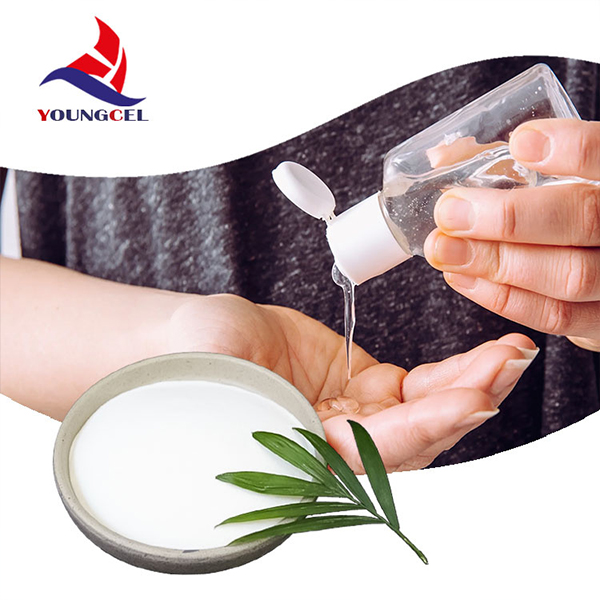
Customized Solutions: Tailoring HPMC for Specific Needs
Recognizing that off-the-shelf solutions may not always meet specialized demands, leading manufacturers of HPMC offer customized solutions. For Powder coating raw material HPMC 20000 Daily Chemicals, this can involve fine-tuning several attributes:
- Viscosity Adjustment: While 20000 mPa.s is a standard, suppliers can produce HPMC with viscosity ranges slightly above or below this to meet precise rheological targets for specific coating or daily chemical formulations.
- Particle Size Optimization: For rapid dissolution and dispersion in certain applications, finer or coarser particle sizes can be engineered. Ultra-fine powders are often preferred in specific powder coating formulations for homogeneous blending.
- Surface Treatment: Some HPMC grades can be surface-treated (e.g., glyoxal-treated) to delay dissolution in cold water, preventing lump formation and improving dispersibility, particularly useful in high-shear mixing environments.
- Substitution Ratio Modification: Altering the methoxy and hydroxypropoxy content can influence properties like thermal gelation temperature, solubility in organic solvents, and overall hydrophilicity, allowing for highly specialized HPMC grades.
- Enhanced Purity & Low Odor: For sensitive daily chemical formulations, HPMC with even higher purity and minimal residual odor can be developed to ensure consumer acceptance and regulatory compliance.
Engaging with a supplier capable of robust R&D and flexible manufacturing allows industries to optimize their formulations, innovate new products, and achieve distinct competitive advantages.
Application Case Studies & Customer Experience
The efficacy of Powder coating raw material HPMC 20000 Daily Chemicals is best demonstrated through its successful implementation in real-world industrial scenarios, reflecting its role in delivering superior product performance and process efficiency.
Case Study 1: Automotive OEM Paint Line Optimization
A major automotive original equipment manufacturer (OEM) faced challenges with consistency in their water-borne basecoats. Traditional thickeners led to inconsistent spray patterns, poor film build on vertical surfaces, and extended drying times, resulting in increased rework and production bottlenecks. After collaborating with our technical team, they integrated a specialized variant of Powder coating raw material HPMC 20000 Daily Chemicals into their basecoat formulation.
The HPMC's optimized pseudoplastic rheology provided excellent shear-thinning characteristics, allowing for smooth atomization during spraying and rapid viscosity recovery on the substrate. This resulted in a 15% reduction in paint consumption due to improved transfer efficiency, a 20% decrease in sag, and a 10% reduction in drying time. The OEM reported a significant improvement in coating uniformity and overall finish quality, leading to a substantial decrease in defect rates and a more streamlined production line. The superior film integrity also contributed to enhanced long-term corrosion resistance of the finished vehicles.
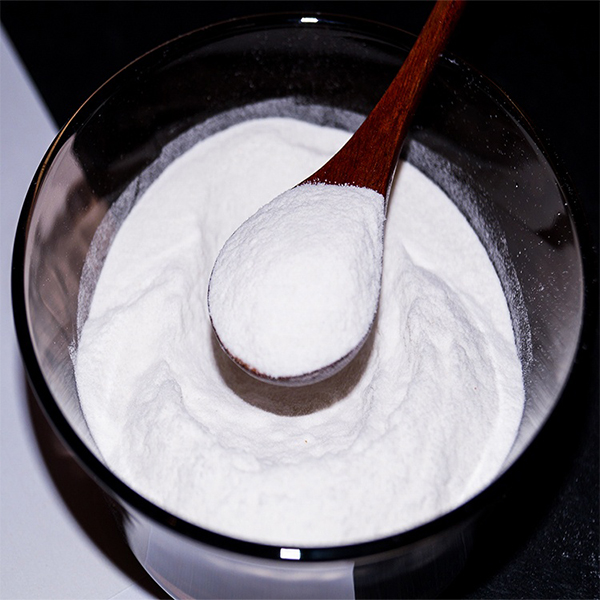
Case Study 2: Premium Personal Care Product Development
A leading brand in premium personal care products aimed to launch a new line of anti-aging serums and moisturizers, requiring exceptional texture, stability, and sensory appeal. Their initial formulations struggled with achieving the desired luxurious feel and long-term emulsion stability. The challenge was to find a rheology modifier that could provide high viscosity at low concentrations, excellent film-forming properties for active ingredient delivery, and be compatible with a broad range of cosmetic ingredients.
By incorporating a specifically tailored Powder coating raw material HPMC 20000 Daily Chemicals, the brand successfully developed products with ideal tactile properties – a smooth, non-tacky feel that spread effortlessly. The HPMC's high water retention capacity also ensured extended hydration benefits. Stability tests showed no phase separation or viscosity degradation over a 24-month shelf life. This led to high consumer satisfaction ratings, attributing to the product's premium feel and efficacy, solidifying the brand's position in the competitive luxury cosmetics market.
Trust & Support: FAQ, Lead Time, Warranty, and After-Sales
Building trust with our B2B partners is paramount. We strive to provide transparent information, reliable services, and comprehensive support for all our products, including Powder coating raw material HPMC 20000 Daily Chemicals.
Frequently Asked Questions (FAQ):
- Q: What is the recommended storage condition for HPMC 20000?
A: It should be stored in a cool, dry place, away from direct sunlight and moisture. The original packaging, if unopened, offers the best protection. - Q: How does the 20000 mPa.s viscosity compare to other HPMC grades?
A: A 20000 mPa.s grade is considered a high-viscosity HPMC, providing significant thickening power at lower concentrations compared to medium or low-viscosity grades (e.g., 4000 mPa.s or 100 mPa.s). It's ideal for applications requiring robust rheology modification. - Q: Is this HPMC suitable for food-grade applications?
A: While HPMC itself can be food-grade, the specific "Powder coating raw material HPMC 20000 Daily Chemicals" is primarily formulated and tested for industrial powder coating and daily chemical applications. For food-grade requirements, please inquire about our specialized food-grade HPMC products and relevant certifications. - Q: What is the typical dissolution time for HPMC 20000?
A: Dissolution time depends on water temperature, stirring intensity, and particle size. For this grade, it typically dissolves within 30-60 minutes in cold water with good agitation, forming a clear, viscous solution. Surface-treated variants offer delayed dissolution to prevent lumping.
Lead Time & Fulfillment Details:
We maintain efficient production schedules and robust logistics networks to ensure timely delivery. Standard lead time for Powder coating raw material HPMC 20000 Daily Chemicals is typically 7-14 business days for established orders. For urgent requirements or large-volume contracts, we encourage clients to discuss their specific needs with our sales team for tailored fulfillment plans. Our global distribution network ensures reliable delivery to major industrial hubs worldwide.
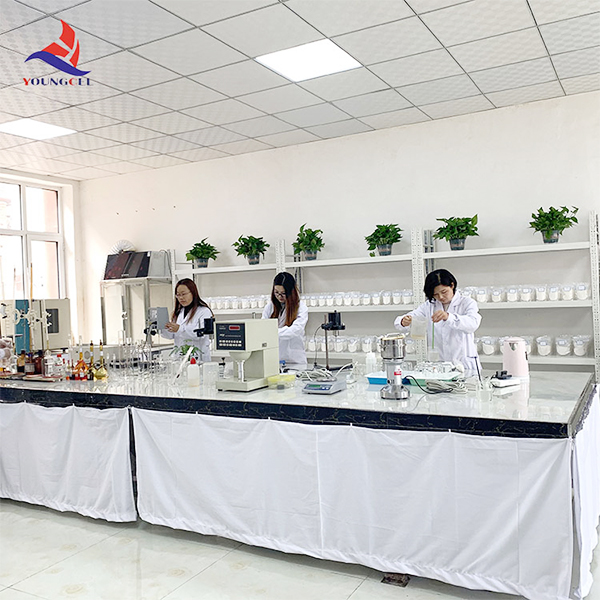
Warranty Commitments:
All batches of our HPMC products are supplied with a Certificate of Analysis (CoA) and conform to the stated technical specifications. We offer a 12-month warranty from the date of manufacture, ensuring the product meets its specified parameters under proper storage conditions. Any deviations from the CoA or specified quality attributes will be addressed promptly through our quality assurance process, including product replacement or credit.
Customer Support Information:
Our dedicated customer support and technical service teams are available to assist with product inquiries, application guidance, and troubleshooting. We offer:
- Technical Consultation: Expert advice on formulation development and optimization.
- Sample Provision: Complimentary samples for R&D and pilot testing.
- After-Sales Service: Prompt response to quality concerns, logistics support, and ongoing technical assistance.
- Regulatory Documentation: Provision of Safety Data Sheets (SDS), Certificates of Origin, and other necessary compliance documents.
For support, please contact us via the details provided on our official website. Our goal is to forge long-term partnerships based on mutual trust and shared success.
Authoritative References
- Roberts, G.A.F. (2007). Polysaccharides: Cellulose and Cellulose Derivatives. In: Polymer Science: A Comprehensive Reference (Vol. 4, pp. 11-20). Elsevier.
- Klein, M.A., & Klemper, M.E. (Eds.). (2015). Handbook of Industrial Chemistry and Biotechnology (12th ed.). Springer.
- Shah, M.A., & Singh, J. (2019). Rheological properties of hydroxypropyl methylcellulose (HPMC) for pharmaceutical and industrial applications. Journal of Polymer Materials, 36(2), 253-264.
- USP 43 (United States Pharmacopeia 43). Hydroxypropyl Methylcellulose monograph. U.S. Pharmacopeial Convention, Rockville, MD.
- European Chemicals Agency (ECHA). REACH registration dossier for Hydroxypropyl Methylcellulose (HPMC).
-
Understanding Methyl 2 Hydroxyethyl Cellulose: Uses, Benefits & Industry InsightsNewsNov.24,2025
-
Hydroxyethyl Methyl Cellulose HEMC: Industrial Uses, Benefits & Future TrendsNewsNov.23,2025
-
HEMC Cellulose: Versatile & Sustainable Industrial Polymer | YoungcelNewsNov.23,2025
-
Methyl Hydroxyethyl Cellulose: Versatile Building Block for Industry & SustainabilityNewsNov.23,2025
-
CAS 9032 42 2: Understanding Polyvinyl Alcohol's Impact on Industry & SustainabilityNewsNov.22,2025
-
Hydroxyethyl Methyl Cellulose: Versatile Solutions for Modern Industry and SustainabilityNewsNov.22,2025




